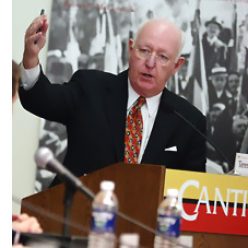The extraordinary scenes last week surrounding the cease fire in Gaza, the poignant release of both Israeli hostages and Palestinian prisoners, the preening of President Trump and Prime Minister Netanyahu in the Knesset, the Summit-for-the-Camera at Sharm el Sheik and the lack of any substantive negotiating progress since have brought back memories for me of the ceasefires that ended the 1967 Six Day War and the 1973 Yom Kippur War.
I covered both conflicts for The New York Times and wrote about them in my memoir “Four Wars, Five Presidents: A Reporter’s Journey from Jerusalem to Saigon to the White House,” (available on Amazon – end of today’s shameless book promotion,) and the outcomes could not have been more different than today.
The 1967 Six Day War, after all, ended with a U.N.-brokered ceasefire and was seen as a triumph for Israel. Levi Eshkol, the Israeli Prime Minister at the time, was seen as weak and indecisive, but because the battle had gone so well, he largely avoided post-war recriminations and remained in office until his death in 1969.
The 1973 war, on the other hand, caught Israel’s leaders by surprise, just as the horrific Hamas assault did on October 7, 2023. And the Prime Minister, Golda Meir, and her top ministers paid the price after the guns went silent. There is an unmistakable through-line, historically and politically between the Yom Kippur War and the Gaza War. Whether this “through line” holds up in the months to come, remains to be seen.
The common element in the Yom Kippur War and the Gaza war, beyond the perennial combatants, is that Israel was caught by surprise in both, despite credible warnings from the intelligence community in advance of Egypt’s attack in 1973 and and repeated alerts to Netanyahu and his government prior to October 7, 2023, that Hamas was preparing some kind of attack. In both cases, the Israeli government failed to act on the warnings.
Within weeks of the Yom Kippur War, a formal State Commission of Inquiry, known as The Agranat Commission, was created, headed by the Chief Justice of the Israeli Supreme Court, and empowered with subpoena authority. After four months of hearings, the Commission issued an initial report that ultimately led to the resignation of Golda Meir and her cabinet, including the Minister of Defense, Moshe Dayan.
Today, just a week after the fragile Gaza ceasefire was announced and days after its first, deadly violations by both sides, the Netanyahu government is doing everything it can to block a similar, formal state commission of inquiry. Instead, his coalition partners are proposing a less formal, politically aligned government commission that is likely to return a more favorable report before the next elections, which must be held by October, 2026, or sooner.
Netanyahu, already Israel’s longest-serving PM, has no intention of taking the blame for the Israelis killed on October 7, or the two years of war that followed, or the reported 67,000 Palestinian deaths, or the prolonged detention of the Israeli hostages or the thousands of Palestinians still incarcerated in Israeli jails. No, that’s not what he is planning at all.
